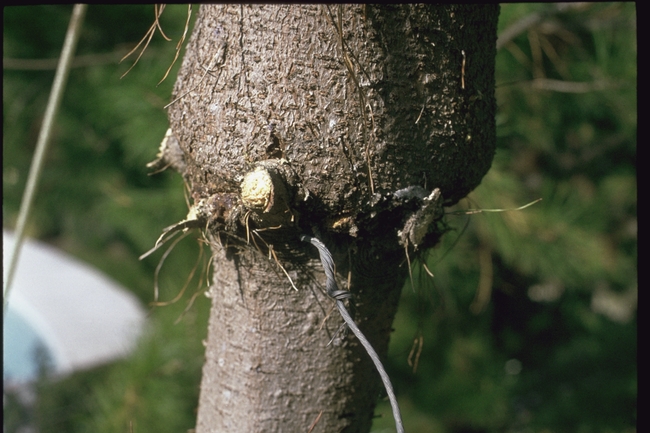
Staking Trees
By Linda Lewis Griffith UCCE Master Gardener
What's the best way to stake a tree? Dave R. Atascadaero
Staking trees is a controversial topic.
Current research encourages home gardeners to avoid staking new trees whenever possible. Trunk movement signals the lower trunk and roots to produce growth and results in stronger trees.
On the other hand, staked trees are frequently damaged by rubbing and girdling. Vertical growth and root development are slowed. Trunks may become stressed at the point of stake attachment and be more susceptible to breaking.
Trees that can stand by themselves or don't need protection from excessive wind do not need to be staked. Most conifers, trees with upright growth habits and bare-root trees do not need additional staking.
Supportive staking may be required if a tree is not strong enough to stand upright or to return to an upright position after being deflected. Staking should be done at the time of planting.
To properly stake a tree, follow these steps:
1) Place two stakes in the ground outside of the root ball on opposite sides of the tree, allowing the prevailing wind to blow through the stakes. Remove the nursery stake.
2) Determine the height of the support tie by putting two fingers on the trunk 3 feet about the ground. Move fingers upward until the tree is supported enough to stand upright. Place ties 6 inches apart at this point.
3) Select flexible, elastic ties, such as rubber tubing, for straps. Wrap them loosely around the trunk, securing them firmly to the posts and ensuring the trunk doesn't rub against the stakes.
4) Cut wooden stakes off 2-3 inches above the ties to avoid injuring lateral branches. Injured branches can become infested by insects or infected with pathogens.
5) Regularly check the ties for girdling or restriction of the trunk. Make sure stakes are still upright and not damaging the trunk or branches.
6) Remove the stakes and ties when the tree is able to stand upright on its own, in about one year.
For more information on staking trees, visit these websites: